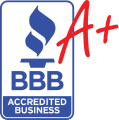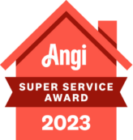In the island paradise of Honolulu, the last headache any homeowner wants is plumbing woes from clogged, slow-draining sinks and tubs. Yet this smelly nuisance plagues many households neglecting proper drain cleaning and maintenance routines. Those forgotten pipes quickly transform into efficient gunk conduits restricting water flow.
While visible surface grime proves an obvious culprit, drainage systems also battle a steady onslaught of invisible hazards. From congealed grease globbing inside kitchen lines to invasive Hawaiian tree roots inching through sewer joints, multiple menaces continually conspire to choke residential drain pathways. Simply ignoring minor sluggishness allows insignificant obstructions to blossom into full-blown backups.
This comprehensive guide covers all the crucial considerations Honolulu homeowners need to develop consistent drain cleaning habits. We’ll examine environmental factors accelerating buildup, identify which drains require more frequent scouring attention, and evaluate cost-effective DIY prevention methods versus when to call professional pipe experts. Proper drain stewardship prevents nightmare plumbing scenarios!
Why Regular Drain Cleaning is Essential
While drain clogs represent a nuisance no homeowner relishes dealing with, neglecting routine drain cleaning invites far more severe plumbing catastrophes. Those forgotten pipe pathways rapidly devolve into efficient grease and debris conduits beckoning overflows and water damage.
Beyond just the inconvenience of slow-draining sinks and tubs, clogged drains create a breeding ground for harmful bacteria and mold proliferating in that stagnant moisture. Those biohazards then get circulated through HVAC systems threatening household air quality. Odors also intensify from trapped organic matter creating rancid sewer gas smells.
On a structural level, obstructed pipes steadily increase hydraulic pressure until failures like cracked lines or collapsed joints occur. That accidental flooding damages foundations and drywall while enabling invasive insects and vegetation through new moisture sources.
From a financial perspective, ongoing drain neglect shortens plumbing life spans forcing premature system replacements. Restaurateurs and businesses face even steeper costs from failed health inspections related to improper drainage. Simple preventative maintenance eliminates those major headaches.
Perhaps most importantly, compromised drainage systems overflow into environmental hazards potentially polluting groundwater and leaching into watersheds harming marine ecosystems. Honolulu’s very way of life becomes threatened.
While undoubtedly tedious, taking simple drain cleaning steps regularly ensures pipes remain operating as intended while protecting health, homes, and local natural resources. Establishing consistent cleaning habits proves far easier than battling entrenched clogs that create exponentially bigger messes down the line.
Factors Affecting How Often You Should Clean Your Drains
Establishing an effective drain cleaning cadence involves far more than following arbitrary schedules. Multiple variables like usage rates, water quality, and plumbing age all impact how rapidly buildup accumulates inside residential pipe systems. Understanding these key contributing factors allows Honolulu homeowners to customize cleaning routines accordingly.
Usage Frequency
It makes sense that drains servicing high-traffic bathroom sinks, showers, and kitchen disposals require more frequent maintenance than seldom-used laundry room utilities. The volume of water, hair, food particles, and soap scum correlates directly with obstruction risks. Prioritize cleaning drains experiencing heavy daily use.
Type of Waste
Not all substances entering drain pipes pose equal clogging threats. While water-soluble soap renders relatively harmless, grease and oil congealing along pipe walls proves far more problematic. Hair binding with soap scum also accelerates bathroom drain blockages compared to just stray toilet paper alone. Identify drains receiving harsh waste stream assaults.
Water Quality
Municipal water sources laden with harsh minerals and sediments gradually calcify inside residential plumbing much faster than softer groundwater supplies. These hardened deposits quickly restrict pipe diameters exacerbating drainage snags. Evaluate your home’s specific water quality and mineral content.
Age of Plumbing
Even properly maintained drains experience inevitable deterioration over decades of constant use. Older pipe materials corrode easier allowing mineral accretion, root infiltration, and joint separations creating blockage entry points. Well-constructed modern plumbing systems employing PVC and copper still require vigilance but less obsessive cleaning.
From demanding kitchens handling grease-laden wastewater to seldom-used laundry sinks serviced by hard municipal supplies, no two drains encounter identical buildup risks. Factoring unique usage cases and plumbing characteristics allows for customizing cleaning regimens and optimizing efficiency. Cookie-cutter protocols simply won’t suffice for Hawaii properties.
Recommended Cleaning Frequency for Different Drains
With those key contributing buildup factors in mind, Honolulu homeowners need to develop cleaning schedules prioritizing drain types based on calculated clogging risks. Some pipes inevitably require far more frequent scouring attention than others to stay clear and flowing efficiently. Let’s examine recommended cleaning frequencies for common residential drain categories:
Kitchen Drains
Those kitchen sinks continually endure an onslaught of harsh debris accelerating clogs. Between congealing grease and cooking oils to fibrous food particles, these drain lines demand obsessive cleaning every 2-4 weeks minimum. Monthly degreasing and deodorizing treatments also prove imperative for garbage disposals to prevent foul rotten smells.
Bathroom Drains
Bathtubs, showers, and sink drains deal with constant hairball invasions bonding with sticky soap scum over time. Routinely clearing out those hairball masses along with mineral deposits from hard water every 6-8 weeks keeps these pipes clear. Toilet drains require less frequent cleaning every 3-4 months to dislodge any accumulated debris.
Laundry/Utility Drains
While not combating harsh cooking grease, washing machine drains still suffer their share of lint, dirt, and detergent buildup over time. Many homeowners overlook these seldom-used workhorses so targeting them for quarterly cleaning ensures they stay freely discharging. Basement floor drains benefit from similar scheduled flushing.
Outdoor Drains
From patio deck drains to rain gutter downspout systems, any exterior plumbing features constantly battle debris accumulation. Leaves, twigs, sand, and even insect nests quickly clog these drain paths over time. Commit to clearing them seasonally with your spring and fall exterior home maintenance projects.
To easily clarify recommended drain cleaning frequencies, refer to the following chart outlining suggested time frames for different drain types:
| Drain Type | Frequency |
| Kitchen Sinks/Disposers | Every 2-3 weeks |
| Bathroom Sinks/Showers | Every 6-7 weeks |
| Laundry Room Drains | Quarterly |
| Outdoor Drains | Seasonal |
| Bathroom Toilets | Every 3-4 months |
This handy chart allows a quick reference for how often drains around the home should undergo routine cleaning to stay clog-free. While certainly not an exact science, this frequency guidance provides a solid starting point for establishing an effective drain maintenance schedule.
Without a strategic cleaning plan addressing each drain’s unique usage profile, Honolulu homeowners simply react to symptoms rather than implementing proactive measures. Map out a calendar matching maintenance routines to calculate clogging risks for true prevention.
DIY Drain Cleaning Methods
For handy Honolulu homeowners comfortable tackling basic plumbing projects themselves, a variety of simple DIY drain cleaning methods prove effective at dislodging minor clogs and clearing light buildup from pipes. Mastering these straightforward techniques promises savings on professional service calls while keeping systems flowing smoothly.
Baking Soda & Vinegar
This safe, eco-friendly drain cleaning duo packs a surprising punch thanks to an explosive chemical reaction creating carbonic acid. Start by pouring 1/2 cup baking soda down the drain followed by 1 cup vinegar. Cover the drain opening for 15 minutes allowing the mixture to work its fizzy magic before flushing with hot water.
Drain Snakes
These inexpensive coiled tools mechanically dislodge debris and penetrate through blockages using rotational torque. Insert the snake cable slowly into pipes carefully feeling for the clog then crank the drum to work through obstructions gradually. Drain snakes provide a handy clog remover for bathroom tubs and sink drains.
Boiling Water
For relatively straightforward soft obstructions like congealed grease or hair clumps, boiling water often provides a quick dissolving flush. Carefully pour multiple kettles’ worth down drains allowing heat transfer to fully penetrate pipes before following up with a baking soda/vinegar treatment to clear any lingering debris loosened up.
Plungers
Plumbers’ trusty plungers don’t just reside at the ready for toilet clogs. They also provide effective suction dislodging power for sink and shower drain obstructions when used properly. Create an airtight seal around drain openings then vigorously pump the plunger to force air pressure through pipes.
Chemical Removers
While not ideal for regular use due to potentially caustic compositions damaging pipes over time, chemical drain cleaners comprised of ingredients like lye, sulfuric acid or aluminum compounds can blast through stubborn clogs. Always exercise extreme caution following product instructions carefully when handling these reactive solutions.
With basic pantry supplies, common household tools, and a little elbow grease, the average homeowner possesses ample DIY resources to keep drains flowing freely without immediately summoning professional reinforcements. Just take care when employing reactive chemicals or power tools improperly.
Signs Your Drains Need Immediate Cleaning
Even with consistent DIY drain cleaning routines, occasionally those clogging culprits prove too formidable for amateur remedies alone. Recognizing these glaring signs signaling a significant blockage demands immediate professional intervention before minor obstructions escalate into full-blown backups creating costly water damage nightmares.
Slow Drainage
When sink, shower, or tub drainage starts demonstrating a marked decrease in water evacuation despite no visible obstructions, subsurface clogs likely restrict pipe diameters further down the line. These clogs only worsen over time allowing more debris to accumulate compounding the issue exponentially.
Gurgling Noises
As water struggles valiantly to bypass stubborn clogs, its turbulent flow manifests in gurgling, gasping sounds from affected drain openings. This unmistakable symphonic serenade represents air getting intermittently sucked past obstructions via the path of least resistance – a clear cry for help.
Foul Odors
Eventually, any organic matter like food waste, hair, or sewage trapped by substantial drain clogs starts decaying generating potent foul, rotten odors no amount of deodorizing can mask. Those lingering smells signify a far bigger problem permeating through connected pipes that demands comprehensive cleaning.
Water Backups
Perhaps the most obvious red flag arrives when drain obstructions achieve density rivaling concrete causing water to completely reverse directions backing up into sinks, tubs or even emerging from basement floors. This signals catastrophic failures requiring emergency pipe jetting services.
Multiple Drain Involvement
While isolated clogs in single sinks or tubs may indicate localized obstructions potentially cleared through basic snaking, concurrent drainage issues across multiple fixtures throughout the home point to significant blockages in main sewer branches needing professional cable machinery.
From sluggish drainage and foul rotten odors to outright water backups, clogged drains announce themselves loudly demanding Honolulu homeowners’ full attention and action. Heeding these early warning signs prevents minor headaches from morphing into far bigger flooding ordeals.
When to Call a Professional
While DIY drain cleaning methods unlock significant cost savings for basic clogs, Honolulu homeowners eventually encounter situations far exceeding amateur capabilities. Recognizing when to call in professional reinforcements proves crucial before manageable snags spiral into catastrophic plumbing failures flooding properties with contaminated water.
Recurring Clogs
If those same sink, shower, or toilet drains continually back up soon after clearing them yourself, it likely indicates a significant clog still remains embedded deeper within pipe systems. Pros utilize high-pressure water jetting and augers designed to bore through the most stubborn obstructions homeowner snakes can’t reach.
Multiple Fixture Involvement
When simultaneous drainage issues start impacting several bathroom and kitchen fixtures throughout your home, those signs point to problems within your main sewer trunk line. Residential plumbers deploy specialized cable machines muscling through primary pipe obstructions too lengthy for basic store-bought snakes.
Sewage Backups
Truly noxious sewage water overflows spewing into homes clearly represent plumbing emergencies demanding professionals’ urgent response regardless of any prior DIY attempts. Sewage exposures create hazardous biohazard conditions unsafe for amateurs to handle alone. Disaster recovery specialists required extensive protective gear training.
Structural Concerns
In older Honolulu homes, persistent drain clogs potentially indicate far more systemic piping failures like collapsed clay lines or deteriorating cast iron. Experienced plumbing diagnosticians utilize video camera inspections to pinpoint those underground structural compromises in need of relining or replacement.
Chemical Exposure
While caustic store-bought chemical drain cleaners provide a stopgap solution, repeated exposure gradually erodes pipes from the inside out. If these futile chemical treatments fail to clear clogs, call professionals who will attempt less destructive hydro-jetting or cable auger methods first before resorting to pipe replacements.
Even with diligent homeowner cleaning habits, some stubborn drainage issues still necessitate residential plumbers’ specialized equipment, advanced training, and situational analysis skills. Knowing those thresholds prevents minor snags from devolving into catastrophic situations demanding far more invasive remedies and skyrocketing costs.
Environmental Considerations
While keeping residential drainage systems flowing smoothly understandably ranks as the top priority, Honolulu homeowners must remain mindful of implementing environmentally responsible cleaning practices. Our island paradise’s fragile tropical ecosystems face enough threats without improper drain maintenance adding fuel to those fires.
Chemical Runoff
Using harsh drain cleaners comprised of lye, sulfuric acid, and other caustic compounds ultimately results in those chemicals leaching into Hawaii’s groundwater and marine habitats after clearing pipes. This toxic runoff pollutes vital water tables islanders rely upon while degrading delicate coral reefs and aquatic life.
Solid Waste Disposal
Attempting to shove excessive solid food waste, grease clumps, or feminine products down drains only concentrates those contaminants downstream within municipal sewers. As these dense clog masses accumulate, sewer overflows occur discharging that untreated effluent directly into the ocean risking broader environmental damage.
Water Conservation
Proactive preventative maintenance requiring less frequent drain clearing reduces overall residential water consumption. Those gallons wasted intermittently flushing lines add up over time straining Honolulu’s valuable freshwater resources pumped through municipal treatment facilities at great expense.
Hazardous Erosion
Left unresolved, serious drain backups steadily erode surrounding soil through hydraulic pressure eventually destabilizing foundations and enabling destructive vegetation encroachment. Those crumbling structures and invasive root systems place delicate shoreline dunes and natural barriers at greater risk of disastrous breaching.
Noise Pollution
While seemingly innocuous, excessive drain snaking and concentrated pipe jetting operations generate significant audible disruptions that potentially disturb migratory bird patterns. Preserving Hawaii’s tranquil atmosphere requires more judicious professional service schedules respecting nesting seasons and local ordinances.
From minimizing chemical discharge and water waste to protecting vulnerable shoreline habitats, thoughtful drain cleaning should align with broader Hawaiian environmental conservation efforts. After all, we’re all ultimately downstream along these precious island watersheds.
Clear the Path to Cleanliness – Trust Drain Pros at Steve’s Plumbing!
For Hawaiian residents, clogged drains represent far more than just sinks and showers failing to clear promptly. Those obstructed pipes disrupt domestic tranquility while threatening structural damage and contaminating our islands’ fragile ecosystems through unseen leaks. From sewage overflows to runoff pollution, mitigating drain issues properly proves critical.
Don’t resign your household to slow-draining fixtures and foul odors any longer! The certified drain cleaning experts at Steve’s Plumbing & AC Service utilize state-of-the-art hydro-jetting and cabling machinery to powerfully scour through even the most formidable clogs. Our team carefully customizes eco-friendly cleaning strategies balancing maximum drainage performance with environmental preservation.
As a local Hawaiian company, we understand the unique challenges Honolulu’s tropical climate creates for plumbing systems. Let us safeguard your investments against invasive roots, mineral buildup, and corrosion through proactive preventative maintenance. Experience the professionalism Hawaiian homeowners have trusted for over 35 years!
Stop wrestling with those clogged drains alone and call Steve’s at (808) 563-4054 today!











